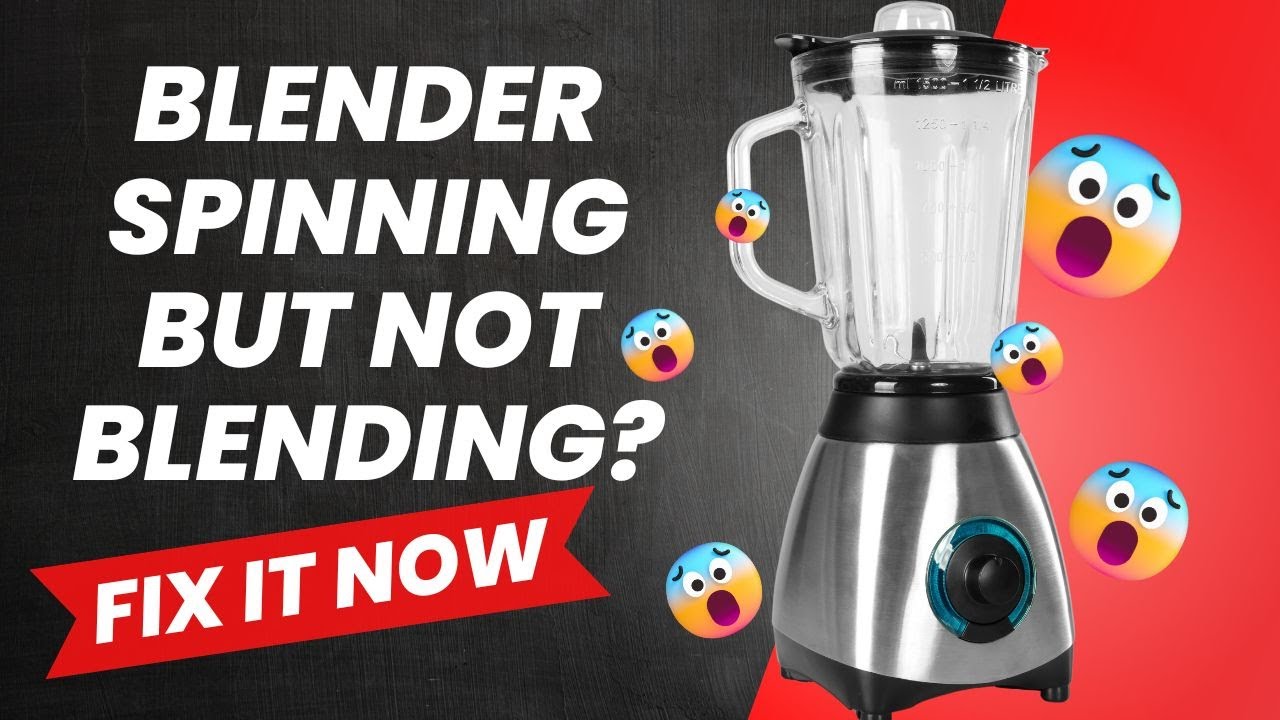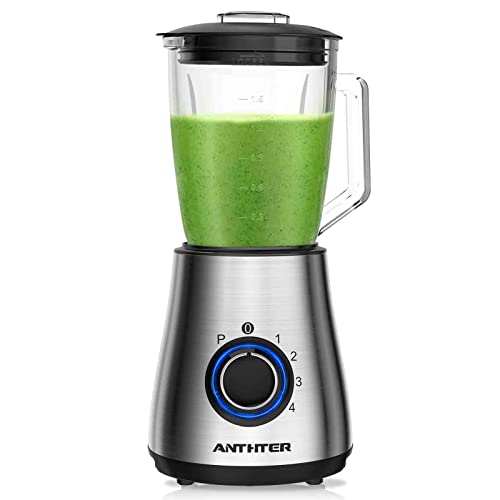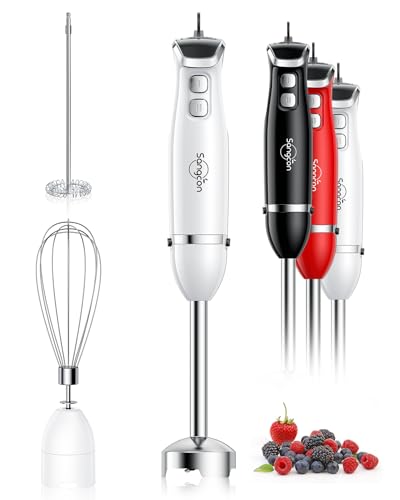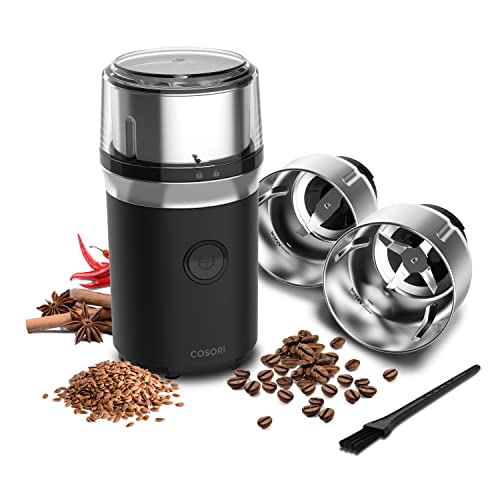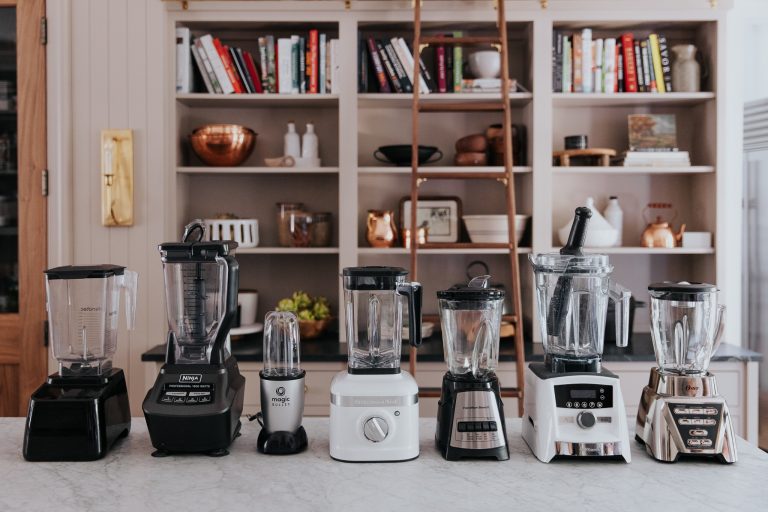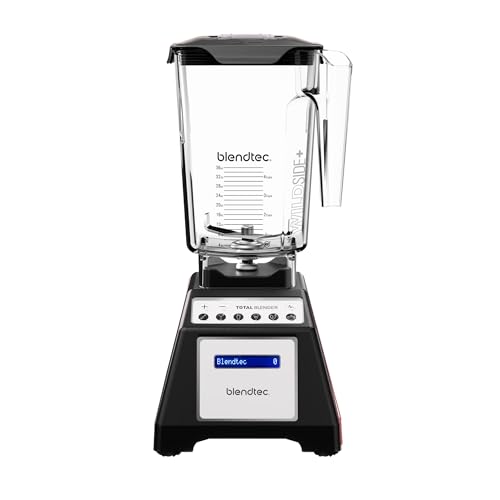Blender Spinning But Not Blending: Quick Fixes!
If your blender spins but isn’t blending, the issue may be dull blades or a disengaged coupler. A blender that spins without blending can waste your time and cause frustration.
It’s a common kitchen appliance problem that often has a straightforward fix. Ensuring your device is functioning correctly is crucial to achieve the smooth results you expect from your blended concoctions. A fully operational blender is essential for creating everything from smoothies to soups, so diagnosing and solving blending issues quickly is important for any home chef.
When your healthy morning smoothie or favorite puree is on the line, knowing how to troubleshoot this issue can save the day. Let’s explore the potential causes and how to get your blender back to peak performance, ensuring your ingredients are perfectly mixed every time.

Credit: www.amazon.com
Common Culprits Behind Blender Mishaps
Blenders can be kitchen magicians. Yet, sometimes they stop mixing well. This can leave you with a chunky smoothie. Let’s find out why!
Misaligned Jar And Base
Blenders work best when pieces fit together right. Sometimes the jar doesn’t sit on the base correctly. That causes problems. Check these parts:
- Make sure the jar locks in – It should click into place.
- Check for damage – Cracks or warps can misalign the jar and base.
- Clean up – Leftover food can stop the jar from fitting right.
Try taking the jar off and putting it back on. Make sure it’s straight and tight!
Dull Blades Need Sharpening
A blender’s power lies in its blades. Dull blades can’t chop well. This is key for blenders to work.
Sharp blades make smooth blends. If your blender is slow, check the blades:
- Turn off the blender.
- Unplug it for safety.
- Touch the blades carefully – Are they sharp?
If they’re dull, it’s sharpening time. Some people can sharpen blades themselves, but a pro can help too. Don’t try if unsure!
First Response Actions To Take
If your blender spins without blending, act swiftly. Don’t let frustration lead. A few simple checks might solve the problem. Stay safe while you inspect.
Power Check And Reset
Ensuring the blender receives power is crucial. Check your outlet first. Is the plug firm and secure? Does the outlet need a reset, or did a breaker trip? Check these:
- Plug connection – tight and snugly fit
- Power outlet – working and not overloaded
- Circuit breaker – reset if needed
- Blender buttons – press to reboot system
Still not working? Time for a deeper look.
Inspecting For Obstructions
Obstructions can stop blades from blending properly. Here’s what to do:
- Unplug your blender. Safety always comes first.
- Remove the pitcher from the base. Inspect for foreign objects.
- Look at the blades and surrounding area. Clear any debris.
- Reassemble and try operating the blender again.
Feeling stuck? Consult the manual or seek professional help.
Diy Troubleshooting Tips
Experiencing issues with your blender not blending properly, even though it’s spinning? You’re not alone! Many face this common kitchen appliance challenge. But before you think about buying a new one, there are easy DIY troubleshooting tips you can try that could solve the problem in no time. Dive into these simple at-home solutions to get your blender back in action!
Seating The Jar Correctly
One of the most frequent causes of a blender spinning yet not blending is the jar not being seated properly. Ensure the following steps for correct placement:
- Turn off and unplug the blender.
- Make sure the base of the jar aligns with the motor gear.
- Press down firmly until you hear a click.
- Plug back in and test the blender.
Proper seating ensures the blades receive the power they need to blend effectively.
Cleaning Blades And Gasket
Built-up residue from past use can hinder blade movement. Regular cleaning keeps your blender efficient:
- Unplug the blender.
- Remove the jar and disassemble the blade and gasket.
- Wash each part with warm soapy water. A brush helps remove residue.
- Rinse and dry thoroughly before reassembling.
- Ensure the gasket is not damaged, replace it if necessary.
Clean blades and a secure gasket contribute to optimal blending performance.
:max_bytes(150000):strip_icc()/fw-immersion-blender-kevin-norris-tout-dcc789d03505476b978ebd14701ef4ec.jpg)
Credit: www.foodandwine.com
When To Replace Parts
Keeping your blender at its peak performance often means knowing when to replace worn-out parts. Spotting these signs early can save you from a blending mishap. Here are some telltale indicators to look out for.
Signs Of Blade Wear
Blades are the heart of your blender. They do all the chopping and blending. Over time, they get dull. A few signs show your blades need replacing:
- Blending takes longer than it used to.
- Ingredients aren’t mixing evenly.
- You see scratches or nicks on the blades.
- The blender makes strange noises during use.
Replace worn blades to keep your blends smooth and efficient!
Seal And Gasket Lifespan
Seals and gaskets keep your blender tight and leak-free. They wear out with time and use. Look for these signs to know if they need a change:
- Leaks form at the bottom of the blender.
- You find it hard to fit the jar onto the base.
- The gasket looks flattened or cracked.
Change these parts to avoid leaks and keep your blending mess-free.
Remember: Regular maintenance keeps your blender in shape. Check these parts often for wear. It helps your blender last longer and perform better!
Preventive Measures For Future
Have you faced the frustration of a blender spinning but not blending? It’s a common problem, but it’s preventable. By following simple steps today, you can save yourself the headache tomorrow. Let’s look at how to keep your blender in top shape, so it’s ready when you are.
Regular Maintenance Schedule
Keeping a blender in great condition starts with regular checks. Much like a car, it needs routine attention. Set a calendar reminder so you won’t forget. Here are key steps:
- Inspect blades monthly for sharpness and tightness.
- Review seals and gaskets to prevent leaks.
- Clean thoroughly after every use, and deep clean monthly.
- Check the motor base for accumulated dust or spills.
Keep these tips in mind:
| Action | Frequency |
|---|---|
| Blade inspection | Monthly |
| Seal check | As needed |
| Regular cleaning | After use |
| Motor base check | Semi-annually |
Best Practices For Blender Care
Good habits can extend your blender’s life. Each use is a chance to prevent future issues. Follow these best practices:
- Avoid overfilling to reduce strain on the motor.
- Start on a low setting, then increase speed gradually.
- Use the right setting for the task at hand.
- Cut food into smaller pieces for easier blending.
- Remove sticky residue promptly to prevent damage.
Never ignore unusual noises or smells. These are signs to act on immediately. Keep your blender happy, and it will keep blending smoothly.
:max_bytes(150000):strip_icc()/SeriousEats-VitaMixImmersion-0080-TamaraStaples-9ca0d57dc2d04a438079a9cbb44ca383.jpeg)
Credit: www.seriouseats.com
Frequently Asked Questions On Blender Spinning But Not Blending
Why Is My Blender Spinning But Not Blending?
If your blender’s blades spin without blending, the issue may be dull blades or a disengaged coupling. Regular wear or overloading the blender can cause these problems. Sharpening or replacing the blades and checking the coupling can typically resolve this.
How Do I Fix A Blender That’s Not Blending?
To fix a non-blending blender, ensure the blade assembly is tightly screwed onto the base. If secured and it still fails to blend, inspect the blades for damage or bluntness. Replace them if needed. Also, confirm that the motor’s gear and blender’s base gear are properly engaged.
Can Overloading Cause Blender Malfunction?
Yes, overloading a blender can cause malfunction, as it puts excessive strain on the motor and may lead to blade disengagement or motor burnout. Always adhere to the maximum fill line and start with lower speeds, gradually increasing as needed to prevent overworking the blender.
What Maintenance Can Prevent Blender Faults?
Regular maintenance like checking blade sharpness, ensuring tight assembly, and cleaning after each use can prevent faults. Also, avoid overfilling and use appropriate speed settings. Such habits prolong the blender’s lifespan and maintain its blending efficiency.
Conclusion
Troubleshooting your blender can be quick and simple with these tips. Ensure your appliance blends smoothly by checking for common issues like blocked blades or incorrect assembly. Regular maintenance can prevent future problems. Happy blending!

